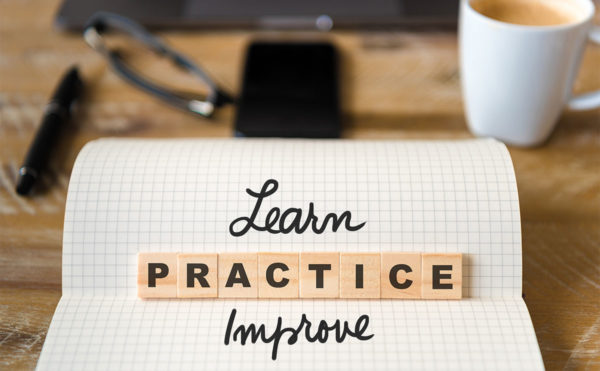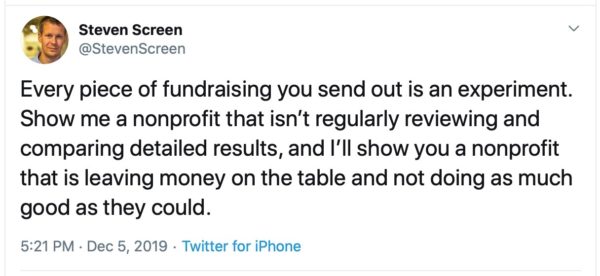“They say a wise man learns from others’ mistakes. I learn from others’ successes, why pay attention to the mistakes?”
~Behdad Sami
Thousands of smart fundraisers have gone before you. The best advice we can give small-to-medium-sized nonprofits for 2020 is to find out what successful fundraisers have done in the past and apply it to your organization’s fundraising.
If You See a Tactic a Lot, It’s Probably Working
One thing to pay attention to: if you see a tactic a lot from professionally run organizations, the results from it are probably great.
For instance, here’s a list of things we see (and use) all the time because they work great. Many organizations don’t like these tactics, but they work great:
- Telemarketing
- Printed gift receipts with reply cards and reply envelopes
- Appeals that boldly share stories of Need
- Direct mail
- Letters and emails that are highly repetitive
- Fundraising messaging that’s so simple it makes expert internal stakeholders uncomfortable
- Having detailed plans and revenue goals for Major Gifts Officers, with high accountability
We learned each of these (and many more) from the successes of fundraisers who have gone before us.
They taught them to us because, out of all the available options, they worked the best.
So rather than reinventing the wheel, always look first to hindsight.
And of course, hindsight shouldn’t be the only place you look. But it’s the only proven resource that small-to-medium-sized nonprofits have, because testing and innovating are expensive.
Two Powerful Things
Here are two powerful things that FAR too few organizations (particularly Boards and leadership) do:
- Take time to ask the question, “For organizations at our stage, who has been successful at this before, and how did they do it?”
- Then trust the results of successful fundraising done before, more than trusting what internal stakeholders think will work, or what they like or don’t like.
Because in our experience, the successes of others won’t look like what you’re doing now.
At first blush, you’ll probably think it won’t work for your donors.
You probably won’t even like it.
But it will likely work.
So go to sofii.org and browse the results. Pay attention to the results-based teaching we do on this blog. Follow people who have a ton of direct response fundraising experience – people like Lisa Sargent, Jeff Brooks, Tom Ahern, Agents of Good, Mark Phillips of Bluefrog, and Simon Scrivener.
If you have the budget and time to innovate, that’s great! Please do it and share!
And if you’re a cash-strapped smaller nonprofit, learn from the past successes that the experts above are constantly sharing!





